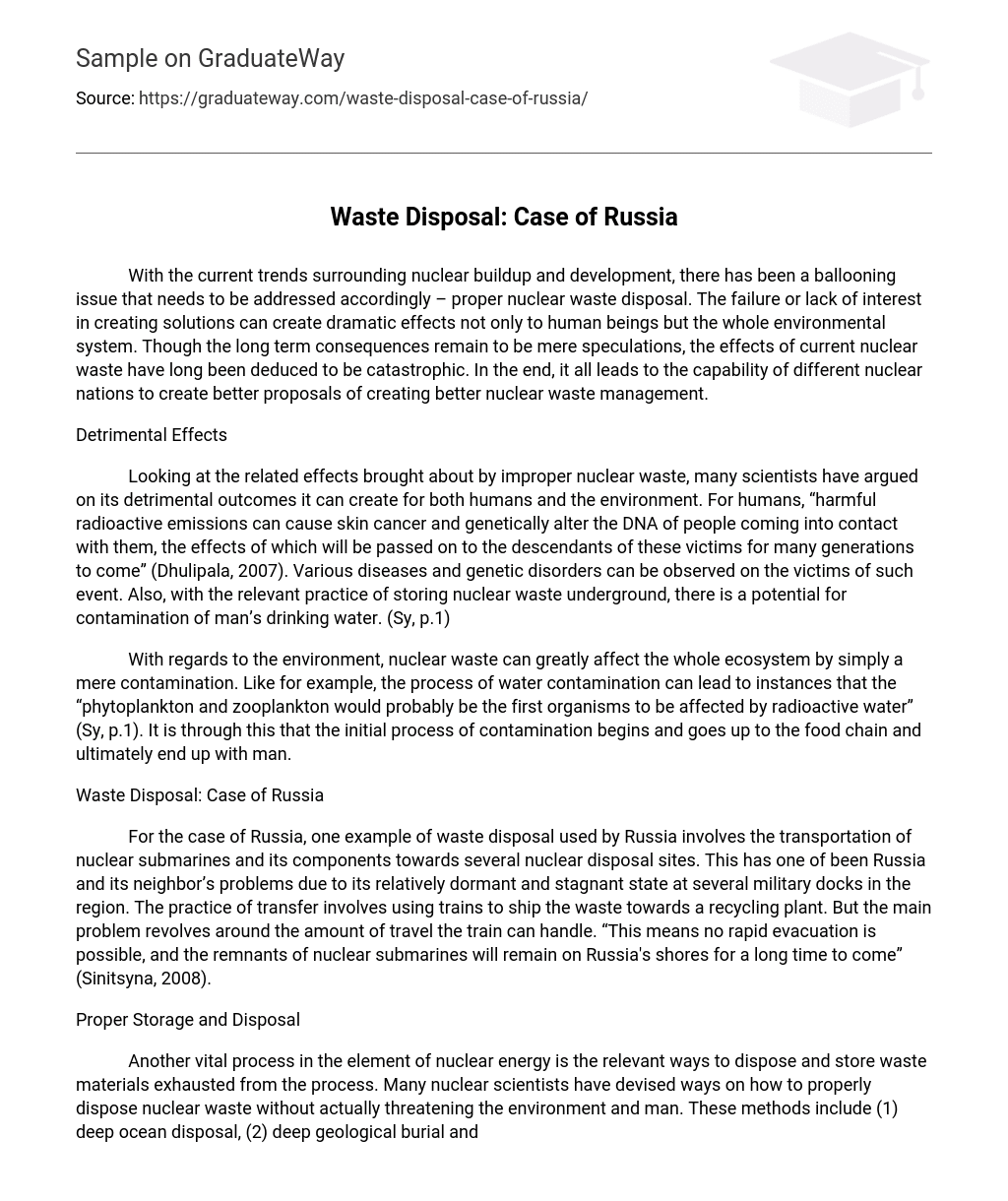With the current trends surrounding nuclear buildup and development, there has been a ballooning issue that needs to be addressed accordingly – proper nuclear waste disposal. The failure or lack of interest in creating solutions can create dramatic effects not only to human beings but the whole environmental system. Though the long term consequences remain to be mere speculations, the effects of current nuclear waste have long been deduced to be catastrophic. In the end, it all leads to the capability of different nuclear nations to create better proposals of creating better nuclear waste management.
Detrimental Effects
Looking at the related effects brought about by improper nuclear waste, many scientists have argued on its detrimental outcomes it can create for both humans and the environment. For humans, “harmful radioactive emissions can cause skin cancer and genetically alter the DNA of people coming into contact with them, the effects of which will be passed on to the descendants of these victims for many generations to come” (Dhulipala, 2007). Various diseases and genetic disorders can be observed on the victims of such event. Also, with the relevant practice of storing nuclear waste underground, there is a potential for contamination of man’s drinking water. (Sy, p.1)
With regards to the environment, nuclear waste can greatly affect the whole ecosystem by simply a mere contamination. Like for example, the process of water contamination can lead to instances that the “phytoplankton and zooplankton would probably be the first organisms to be affected by radioactive water” (Sy, p.1). It is through this that the initial process of contamination begins and goes up to the food chain and ultimately end up with man.
Waste Disposal: Case of Russia
For the case of Russia, one example of waste disposal used by Russia involves the transportation of nuclear submarines and its components towards several nuclear disposal sites. This has one of been Russia and its neighbor’s problems due to its relatively dormant and stagnant state at several military docks in the region. The practice of transfer involves using trains to ship the waste towards a recycling plant. But the main problem revolves around the amount of travel the train can handle. “This means no rapid evacuation is possible, and the remnants of nuclear submarines will remain on Russia’s shores for a long time to come” (Sinitsyna, 2008).
Proper Storage and Disposal
Another vital process in the element of nuclear energy is the relevant ways to dispose and store waste materials exhausted from the process. Many nuclear scientists have devised ways on how to properly dispose nuclear waste without actually threatening the environment and man. These methods include (1) deep ocean disposal, (2) deep geological burial and (3) nuclear waste recycling. The first one deals with the process wherein “containers made of borosilicate glass are filled up with nuclear waste” (Dhulipala, 2007). The second one has the same concept as deep ocean disposal. The only difference between the two is that “the containers are buried deep underground, in less-populated areas” (Dhulipala, 2007). Lastly, the third way involves the method “in which the uranium, plutonium and other fission products are separated into different streams using chemical processes” (Dhulipala, 2007).
Conclusion
The detrimental effects of improper dumping of nuclear waste are clearly evident. Due to this, states must create active measures and collaborate to create better opportunities and exhaust capabilities that will ensure safe, efficient and effective nuclear waste disposal programs.
References
Dhulipala, S. (2007) Disposal of Nuclear Waste: Current Methods and Concerns. Retrieved July
26, 2008 from http://engineering.suite101.com/article.cfm/disposal_of_nuclear_wastes
Sinitsyna, T. (2008) Living Among Dead Submarines. Retrieved July 26, 2008 from
http://www.spacewar.com/reports/Living_Among_Dead_Submarines_999.html
Sy, J. (n.d.) Nuclear Waste. Retrieved July 26, 2008 from
http://www.everything2.com/title/Nuclear%2520waste





